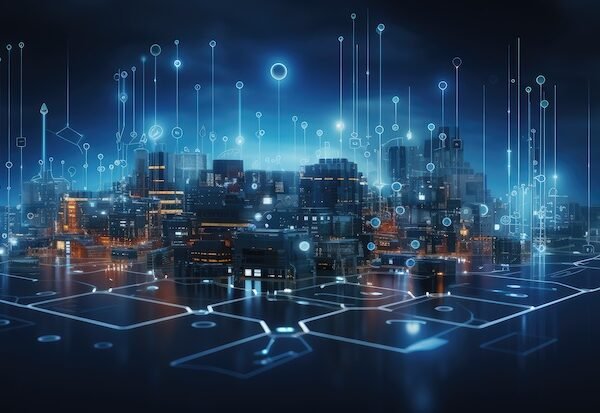

By André Marino
Between emissions regulations, tenant demands, and a precarious market, commercial real estate owners face enormous pressure to optimize building performance and reduce operating costs. The U.S. Department of Energy’s (DoE) HVAC requirements and the EU’s Energy Performance of Buildings Directive (EPBR) lay out strict deadlines for compliance with net-zero goals. Commercial property teams also feel the heat from tenants, two-thirds of whom have requested improvements in comfort-related issues, such as temperature or after-hours HVAC operation. Skyrocketing office vacancy rates in some markets exacerbate the challenge of keeping costs down.
Luckily, the demands of regulators and tenants often dovetail with owners’ need for lower operating costs, a convergence that represents great opportunity.
Connected Devices, Control Systems Form Digital Backbone Of Efficient Buildings
In many cases, building owners operate older facilities with aging infrastructures. Stakeholders must retrofit these buildings to comply with regulations and keep tenants comfortable, healthy, and happy. In the past, a conversation about achieving sustainability and people centricity was one of tradeoffs. Today, however, building owners have at their disposal an array of technology that can address regulatory, tenant, and long-term operating cost concerns in one fell swoop.
Many building owners understand how crucial these improvements are. By 2025, 80% or more owners plan to implement technologies to enhance sustainability and environmental control, predictive facility management, and digital connectivity and infrastructure. Connected smart room sensors deliver the data and control needed to improve efficiency, health, and comfort.
By integrating connected IoT devices with mechanical and electrical systems, such as HVAC, operators can gain control over different building areas through one central system. Moreover, a centralized operating system for the entire building also lets tenants customize everything from air to lighting levels, while allowing the operations team to easily monitor and control power, HVAC, and automation systems.
Automated and optimized HVAC systems will be central to building operators’ retrofits. Sensors that monitor room or zone occupancy allow modern HVAC systems to go from a setting with constant air volume to a demand-controlled ventilation (DCV) approach. It’s easy to see how demand-controlled climate control will keep tenants happy. The data from IoT-enabled equipment also provides visibility into how, where, and when energy is consumed by an HVAC system, allowing for more precise usage.
More precise demand-driven air flow from HVAC systems will help buildings use energy more efficiently. More efficient energy use helps buildings meet the expectations of regulations like the DoE’s HVAC standards and EPBR, which raise energy-efficiency requirements or mandate building owners implement automation and controls.
Intelligent technologies allow building owners to adapt faster to changing environments
The combination of IoT and mechanical and electrical systems doesn’t stop at demand-controlled ventilation, either. AI-enabled platforms change the paradigm by fine-tuning HVAC systems to the nth degree. Building owners can pass HVAC data, along with energy-load profiles, lighting, temperature, and other parameters, through algorithms that can optimize space usage based on occupancy trends, satisfying certification and regulatory requirements simultaneously.
Traditionally, companies have experienced their largest hurdles with AI when faced with the difficulty and complications of new hardware installation. This can be challenging from a skilled




